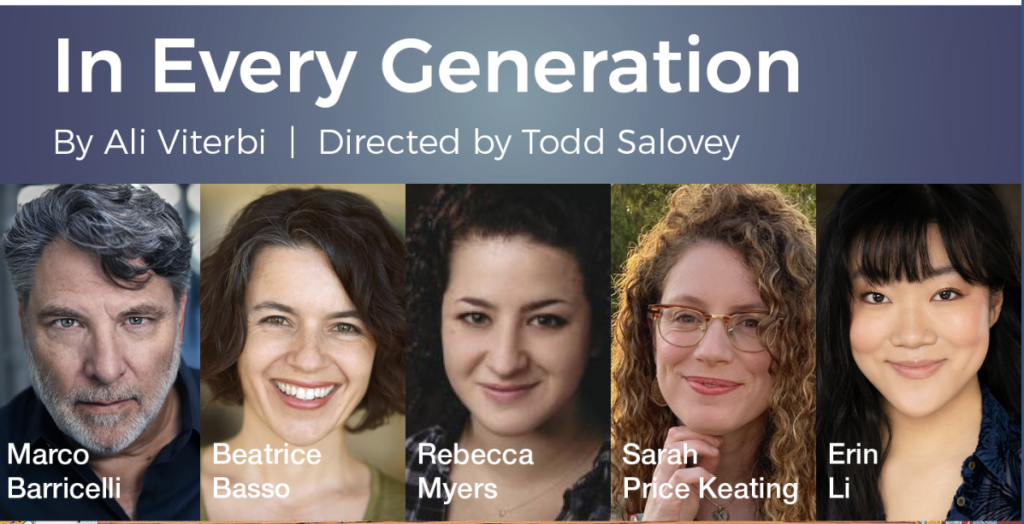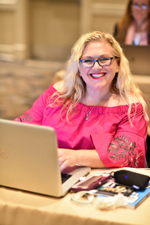
By Sandi Masori

SAN DIEGO – Back in the beginning of the summer I had the opportunity to attend a Jewish Italian culture night through San Diego JFest. Part of that event was a reading of an excerpt of Ali Viterbi’s play In Every Generation. In that reading, Marco Barricelli and his real-life wife Beatrice Basso read the parts of Davide and Paola in the scene that depicts them as post-World War II, newly-married immigrants to America, exploring their new freedom to publicly practice Judaism without fear of pogroms or Nazis. I really enjoyed the excerpt, and it whet my appetite to see the entire play.
I sort of got my wish recently, when The Whole Megillah and San Diego JFest did a reading of the play in its entirety at New Village Arts in Carlsbad.
In Every Generation is the story of a Jewish family at its Passover seder in multiple eras exploring their Jewish identity and dealing with the challenges of their times. The first act is set in modern times and we meet three generations of a family – the immigrant matriarch and patriarch Paola and Davide (Barricelli and Basso reprised their roles), the mother Valeria (Sarah Price Keating), and the young adults Yael (Becca Myers) and Deb (Erin Li). In this generation, the conversations are much like today with the older generation knowing why they are holding onto the culture so tightly, the middle-age generation dealing with mid-life trauma, and the younger generation struggling to find their identity in a time of leftist politics and identity wars.
The next act explores the first free seder post WWII for the immigrant generation, and the third act imagines an eerily relevant dystopian not-so-distant future when rampant antisemitism had caused most of the Jews to leave America to live in Israel. Lastly, there is a re-imagining of the very first seder of the Israelites en route from Egypt to the Promised Land. In every scene the family is struggling with their Jewish identity and the antisemitism of the day.
Although it was just a reading, it was phenomenal. All of the actors were incredible and if there were a dry eye in the theater by the end, I would be very surprised.
Right now, we’re in the time of year when even the most lax Jews are likely to find themselves in a synagogue or at a Jewish event. I have to admit though, that for me, I’ve never felt a real connection to G-d or the Jewish people through sitting in shul. I notice people’s hair, their clothes, the slowly ticking time, the number of pages until food, but I don’t usually experience what some might call a “religious experience.”
Yet sitting in that audience, seeing my heritage, my people, my culture represented on the stage; hearing the familiar chant of the four-questions, listening to the ubiquitous banter that comes with it, my heart almost came out of my chest as I was kvelling with pride and feeling like I was a part of something bigger and more timeless than just my regular existence. I felt such a sense of being seen. Even though my family is not from Italy, I still felt such a sense of Am Yisrael. It was one of the most profoundly “religious” experiences of my life.
It really drove home to me why representation is so important, both to connect us to our heritage, culture and people and to educate others outside our community about our struggles and about who and what we are.
It really made me think: If the reading was that powerful, what would it be like to see the fully-staged production? And moreover, what would it take to get it fully produced?
I caught up with Todd Salovey, the founding artistic director of the Lipinsky Family San Diego Jewish Arts Festival and the director of the show. I asked him that very question.
Tomorrow in Part 2: Todd Salovey’s response.
*
Sandi Masori is a theater and restaurant reviewer for San Diego Jewish World